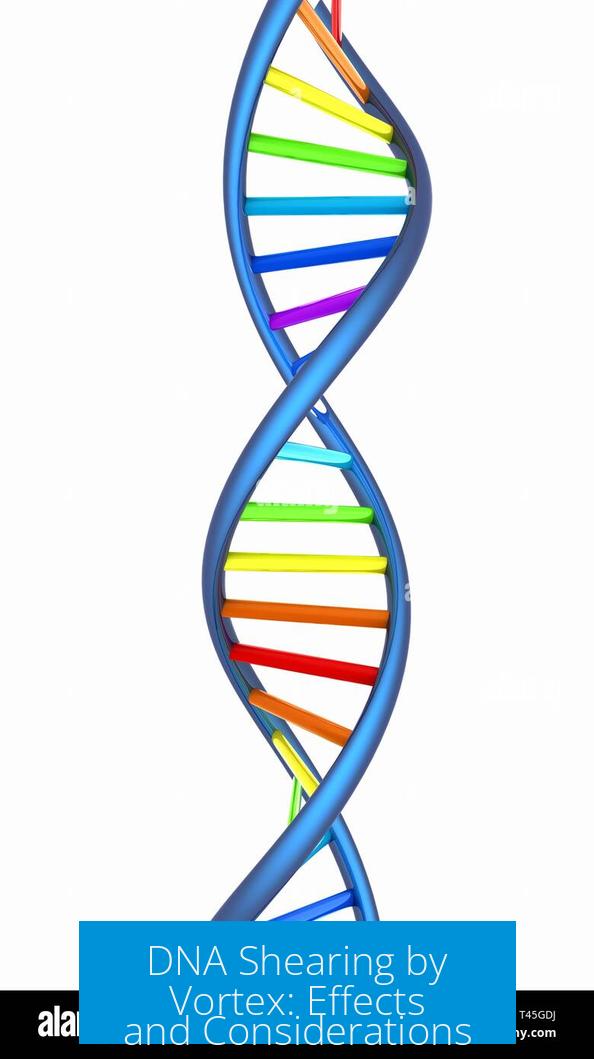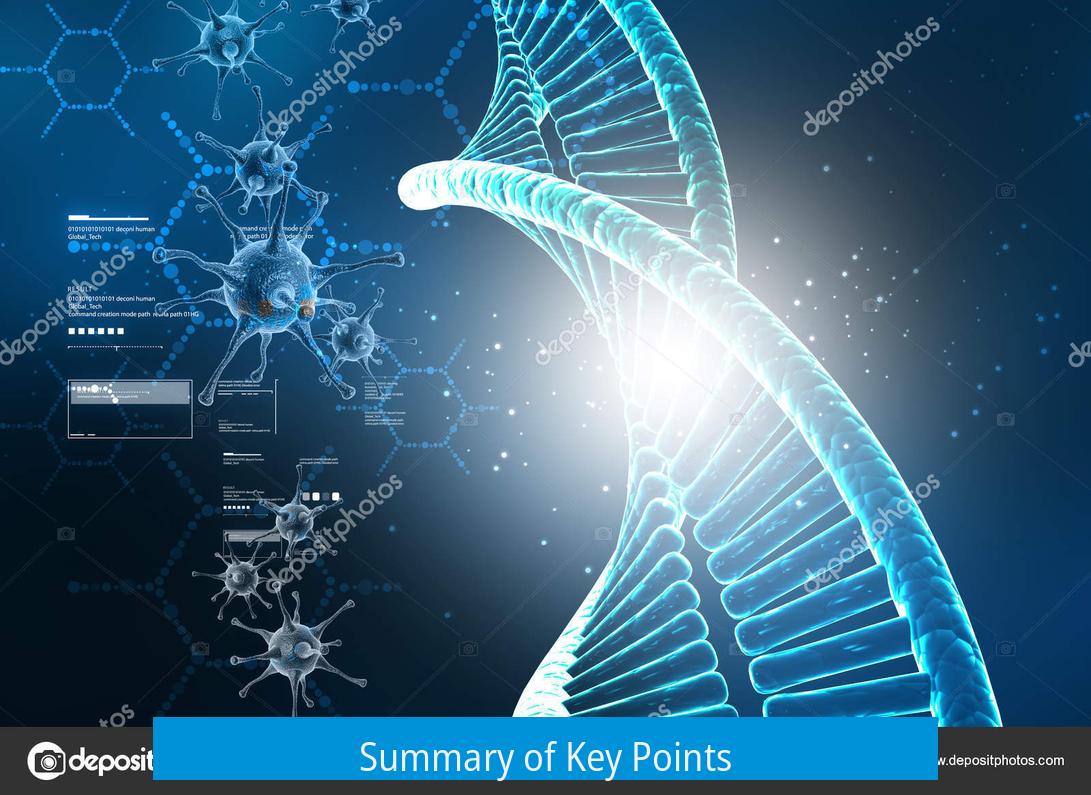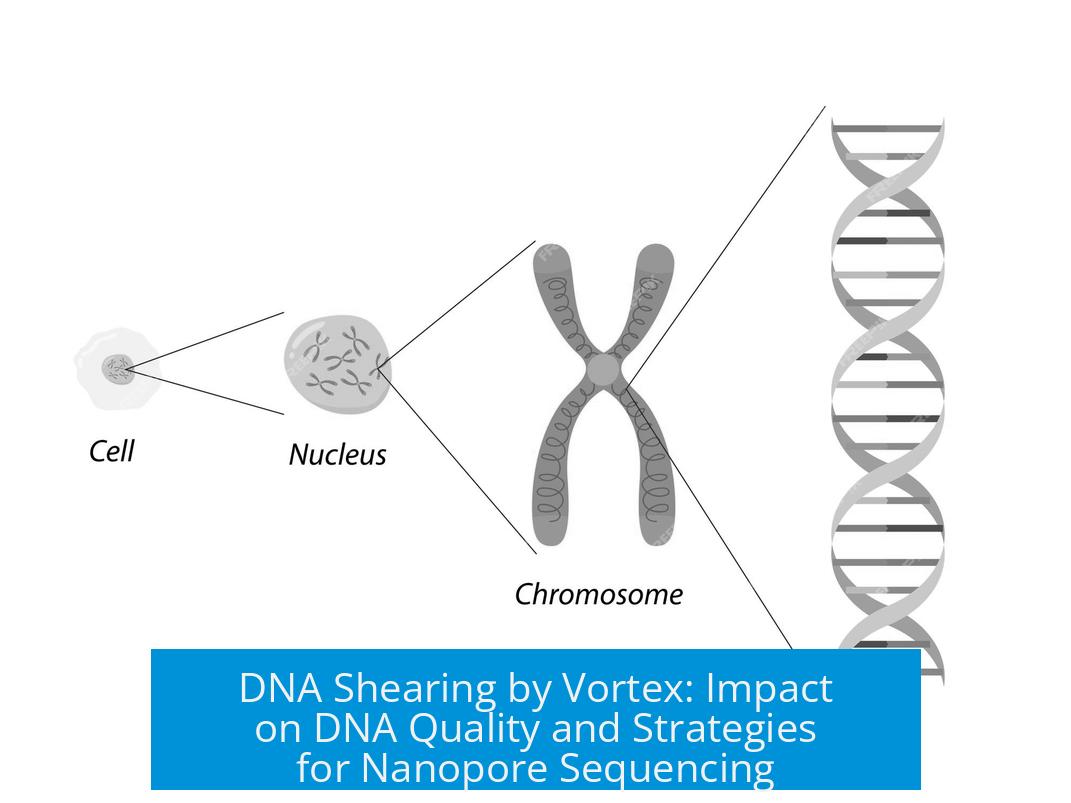DNA Shearing by Vortex: Effects and Considerations

DNA shearing by vortexing breaks DNA strands into smaller fragments. This fragmentation is generally undesirable for applications like nanopore sequencing, which require long DNA fragments to optimize read length and data quality. Vortexing creates physical stress that mechanically fragments DNA, reducing the molecular weight.
Impact on DNA Fragment Size
Nanopore sequencing benefits from long, intact DNA strands. Mechanical actions such as vortexing introduce shearing forces that shorten DNA. Fragmented DNA can still be sequenced but may decrease read lengths and overall assembly accuracy.
Therefore, minimizing vortexing or harsh mixing preserves high molecular weight DNA crucial for successful sequencing runs. Avoiding vigorous agitation helps maintain fragment integrity across the workflow.
Distinguishing Shearing from Contamination
While DNA shearing affects fragment size, clogging of nanopores often stems from contaminants rather than from fragmented DNA itself.
- Samples with residual proteins or other impurities can block nanopores.
- Issues with sequencing kits are less likely than sample purity problems.
Thus, thorough purification is essential to prevent clogging and improve sequencing performance.
Purification Strategies to Improve DNA Quality
Proper sample preparation reduces contaminants that mimic shearing effects.
- Consider phenol extraction for effective protein removal if ethanol precipitation is insufficient.
- Use DNA purification kits designed to enrich purity.
- Employ spectrophotometric analysis (A260/A280 ratio) to assess protein contamination in samples.
Maintaining sample purity ensures that issues in sequencing are not mistaken for problems caused by DNA fragmentation.
Summary of Key Points

- Vortexing causes DNA shearing that reduces fragment length, negatively impacting nanopore sequencing.
- Preserving high molecular weight DNA requires gentle handling without vigorous vortexing.
- Nanopore clogging often results from contaminants rather than DNA fragmentation.
- Effective protein removal and purity checks are critical to maintain sample quality.
DNA Shearing by Vortex: Why It Matters and How to Avoid It for Nanopore Sequencing
The direct answer: DNA shearing by vortexing physically breaks DNA strands into shorter fragments, which harms your efforts to keep long DNA intact for nanopore sequencing. So yes, vortexing is a no-go if you want your DNA long and happy.
Let’s dive into why this matters, what happens when DNA shearing occurs, and how you can avoid it to get the best sequencing results.
The Quest for Long DNA Fragments: Why Length Matters
Nano—what now? Nanopore sequencing is a cool technology that reads DNA by threading it through tiny nanopores. Unlike many traditional methods, this technique shines brightest when fed long, uninterrupted DNA strands. Why? Because longer fragments provide better context, resulting in clearer, more complete genetic maps.
Imagine trying to piece together a shredded spy novel. If the pages come torn in tiny bits, the story’s barely intelligible. That’s exactly what happens when DNA fragments are too short due to shearing—a frustrating mess for researchers.
Key fact: Maintaining long DNA fragments is crucial. This means that any action causing DNA to snap, like vortexing, is bad news for your sequencing dreams.
Vortexing: The Sneaky DNA Breaker
Vortexing’s a lab classic. Need to mix something quickly? You give tubes a whirl on the vortexer. It’s fast and effective for mixing but can turn into a DNA wrecking ball if you’re not careful.
The spinning action creates shear forces, which literally pull and snap DNA molecules. These breakages reduce fragment size—right when you want long, high molecular weight DNA.
Scientists who focus on nanopore sequencing often share a practical golden rule: avoid vortexing steps to preserve DNA quality. Instead, gentle mixing methods or slow pipetting prevail.
High Molecular Weight DNA: The Crown Jewel
Why do experts stress isolating high molecular weight (HMW) DNA? Because that’s the kind of DNA nanopore sequencers love most. HMW DNA means fewer breaks, longer strands, and smoother sequencing runs.
One experienced researcher plainly states, “I’ve always isolated high molecular weight DNA for nanopore so I doubt it’s #2,” meaning shear damage like from vortexing is avoided fundamentally.
These efforts are all about protecting the DNA’s length during isolation and prep, ensuring the fragments stay intact and intact they stay happy.
Contamination: The Real Villain in Nanopore Clogging
Here’s a plot twist: if your nanopore is clogging, the culprit often isn’t sheared DNA—it’s contaminants.
Contaminants like proteins or residual chemicals can clog the nanopores, halting sequencing prematurely.
One voice in the lab wisdom states, “If they’re getting clogged it’s likely a contaminant… but I doubt it’s a problem with the rapid sequencing kit, more likely it’s your sample itself.”
This shifts attention from worrying obsessively about shearing to focusing on cleaning the sample properly.
Protein Removal: The Unsung Hero in DNA Purity
Getting pure DNA isn’t just about keeping strands long; it’s about kicking out the unwanted guests, especially proteins.
Simple ethanol precipitation sometimes isn’t enough to chase away stubborn proteins.
For tougher contamination, phenol extraction can help. It’s a classic but powerful method to cleanly separate proteins from DNA.
Or, consider a DNA purification kit designed to tidy up your sample faster and easier.
Not sure if your DNA is protein-free? Grab a spectrophotometer and check the a260/a280 ratio. Ratios deviating from ~1.8 usually mean protein contamination lurks in your tube.
Putting It All Together: Tips to Preserve DNA for Nanopore Sequencing
- Avoid vortexing. Use gentle pipetting or mixing instead to preserve long DNA.
- Go for purity. Use phenol extraction or DNA purification kits if standard ethanol precipitation leaves proteins behind.
- Check purity regularly. Measure a260/a280 ratios to spot contaminants early and avoid nanopore clogging.
- Focus on sample quality. Contamination is more likely the cause of sequencing issues than shear damage alone.
- Handle with care. Treat DNA as precious cargo—jostling it too hard breaks it.
Why Should You Care About All This?
In real terms, failing to avoid vortex shearing means wasted time and money. You risk shorter DNA reads, incomplete data, and frustrated lab hours staring at nanopore errors.
On the flip side, gentle handling and rigorous purification deliver long, clean DNA strands that unleash the full power of nanopore sequencing.
It’s like cooking a gourmet meal—rushing steps and using harsh methods ruin the dish. But patience and care bring out the best flavor.
In Conclusion: Shear Warnings and Gentle Wisdom
DNA shearing by vortex isn’t just a theoretical problem. It’s a very real risk to anyone wanting top-notch nanopore sequencing. However, the story isn’t just about breaking DNA strands; it’s also about combating contaminants that masquerade as problems.
This means: don’t vortex your precious DNA samples, prioritize sample purity, and monitor your DNA quality carefully. These small but crucial steps pay off with longer DNA reads, less clogging, and smoother sequencing runs.
Next time you pick up a tube, ask yourself: “Am I being gentle enough?” That question alone might make all the difference between data disaster and scientific glory.
What effect does vortexing have on DNA fragment size?
Vortexing can physically break DNA strands, causing them to shear. This reduces fragment length, which is problematic when long DNA fragments are needed, like in nanopore sequencing.
Why should vortexing be avoided when preparing DNA for nanopore sequencing?
Vortexing can shorten DNA strands, lowering fragment size. Longer fragments improve sequencing quality, so avoiding shear helps maintain the necessary high molecular weight DNA.
Can sample contamination be mistaken for DNA shearing effects?
Yes. Contaminants can clog nanopores and hinder sequencing, which may be misinterpreted as shearing damage. Proper purification helps distinguish these issues.
How can protein contamination affect DNA samples compared to DNA shearing?
Protein contamination can block nanopores during sequencing, mimicking problems seen with sheared DNA. Using phenol extraction or purification kits and checking purity ratios can eliminate these contaminants.
Is vortexing the main cause of nanopore sequencing failure?
No. While vortexing impacts DNA length, sample contaminants are often the primary reason for sequencing problems like pore clogging, not mechanical shearing alone.





Leave a Comment